PH 212
Doppler shift
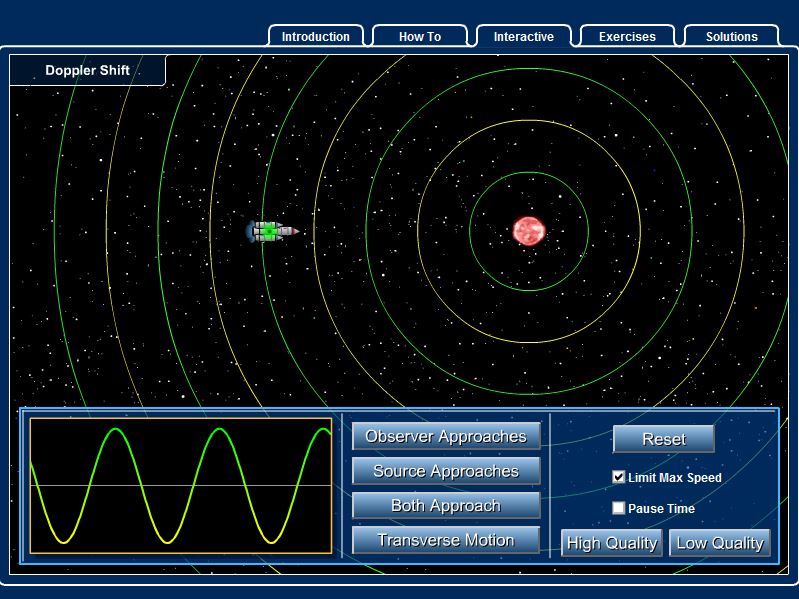
The Doppler shift arises when there is relative motion between a wave source and an observer. If the distance between the two is decreasing, the frequency of the wave is higher than the frequency that would be heard if the source and observer were at rest with respect to each other. If the distance between the two is increasing, the observed frequency is lower.
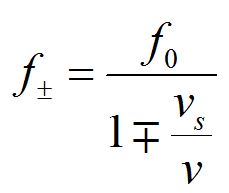
For the case of a moving source and a stationary observer, the relationship between the observed frequency f and the frequency emitted by the source f0 can be found using the formula above, where v is the wave speed and vs is the speed of the source.
Note that f+ denotes a higher frequency, corresponding to the source moving toward the observer, while f- denotes a lower frequency, corresponding to the source moving away from the observer.
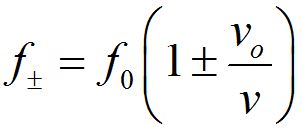
For the case of a moving observer and a stationary source, the relationship between the observed frequency f and the frequency emitted by the source f0 can be found using the formula above, where v is the wave speed and vo is the speed of the observer.
Note that f+ denotes a higher frequency, corresponding to the observer moving toward the source, while f- denotes a lower frequency, corresponding to the observer moving away from the source.
These formulas can be rewritten in terms of wavelength, using the relationship between velocity, wavelength and frequency.
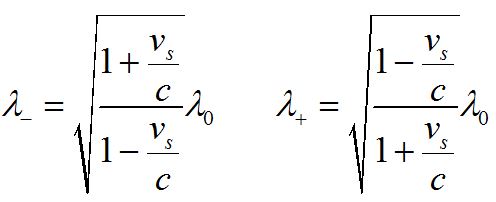

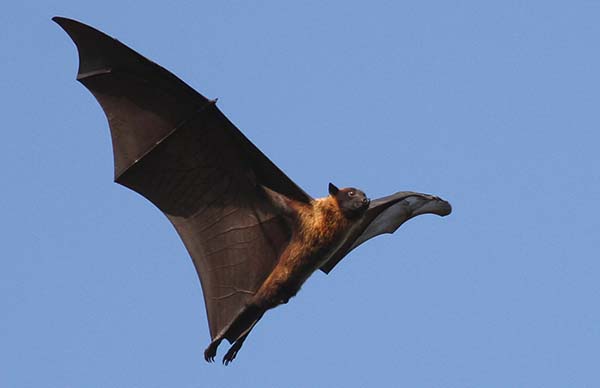
A bat chirps for echolocation at 25 kHz. How fast would it have to be flying for you to hear it, at 20 kHz?
Courtesy of Astronomy Interactives: highered.mheducation.com/sites/0072482621/student_view0/interactives.html